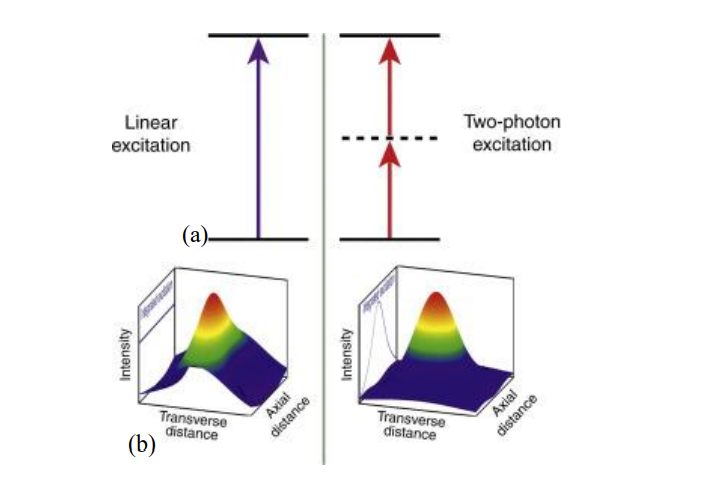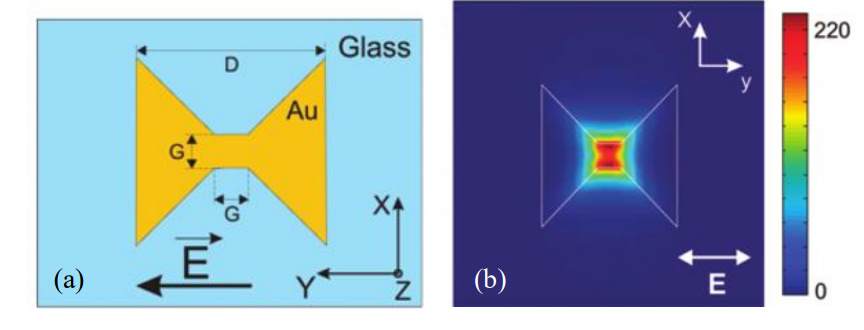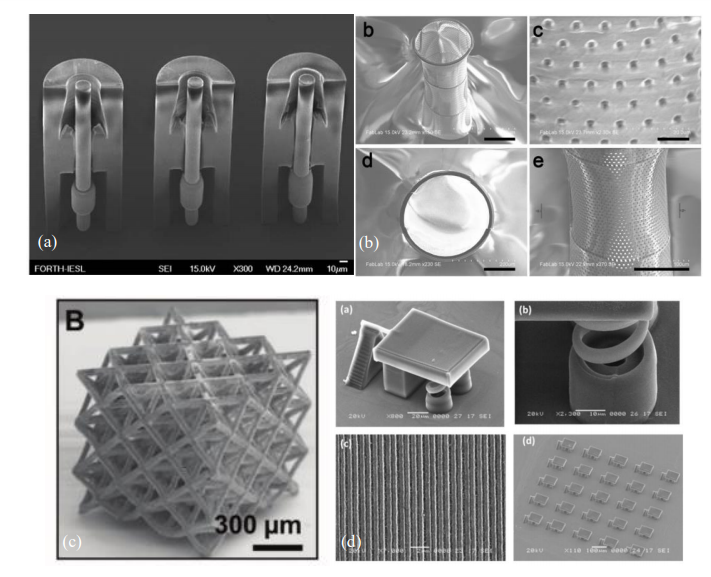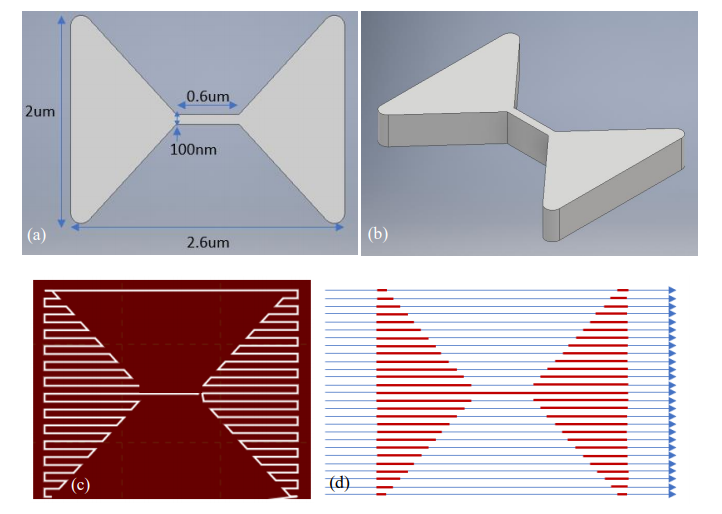Jithin Prabha of Purdue University explores AM processes using 2 photon polymerization, useful for a variety of applications such as optics, along with metamaterials and surfaces, microfluidics, tissue engineering and bioprinting, and further exploration of innovative ways to deliver drugs. Prabha outlines his work in ‘3D Printing of Nanoantenna Arrays for Optical Metasurfaces,’ discussing how nanostructures can be fabricated in what could be referred to as ‘true 3D printing.’
 In this study, Prabha employs 2 photon fabrication to make a metasurface printed via diabolo antenna arrays on a glass substrate, then coated in gold. While microfabrication can be performed in numerous ways, Prabha points out that multiphoton absorption is superior due to the capability for 3D printing complex geometries with just one laser beam.
In this study, Prabha employs 2 photon fabrication to make a metasurface printed via diabolo antenna arrays on a glass substrate, then coated in gold. While microfabrication can be performed in numerous ways, Prabha points out that multiphoton absorption is superior due to the capability for 3D printing complex geometries with just one laser beam.
“The process can be considered as the real 3D printing as the structure can be formed in a truly three-dimensional manner with the 3D scanning of the focal spot compared to other methods of additive manufacturing which are done layer by layer,” states Prabha. “Two photon absorption based free radical photopolymerization is what enables this remarkable feat. Two photon absorption is the simultaneous absorption of two photons to increase the energy level of a molecule from one state to a higher excited state.”
An 800nm femtosecond laser was used to create the nanoantenna arrays, which were consequently studied using a scanning electron microscope and a Fourier Transform Infrared Spectrometer (FTIR).
“For structures that are very small and are printed with a higher resolution by adding the quencher, the conventional style of slicing explained above leads to the structure being thicker at the edges and not smooth on the top. For such structures like the nano antennas like the diabolo antenna a new type of scanning method called overscanning is devised,” states Prabha.

(a) linear excitation vs two photon excitation (b) Spatial intensity profiles in the center of the beam axis for the two cases. The profile of excited molecules integrated in the transverse direction is shown at the left of each 3D plot [1].
- Height of the structure
- Periodicity in x and y
- Bowtie length and breadth
- Neck length and width
- Thickness of gold coating

(a) simulation model for diabolo antenna showing gold structure of thickness T on glass, other dimensions as shown and electric field polarization direction, (b) Magnetic field enhancement (G = T = 50 nm, D = 310 nm, λ = 1940 nm) excited result showing central hotspot with peak magnetic field enhancement of 220 normalized with the magnetic field without the gold structure [12].
“The antenna parameters are optimized by simulations and effects of variation of critical parameters are shown in the plots and a zero reflection at resonance condition of 4.04 µm is calculated. Absorbance is calculated using the volumetric loss density equation,” concluded the author. “The absorption in the antenna and polymer is negligible and absorption in the aperture peaks at 50% at the resonance condition. Transmittance plot shows that there is a transmittance peak close to the reflectance dip at resonance and ~50% of the light gets transmitted at resonance. FTIR experiments show a polarization dependence dip to 40% at a wavelength of 6.6 µm. This change in location of the dip and shallower dip might be due to errors in fabrication like small variations in the dimensions and locations of antenna with respect to each other.
“The fabrication method discussed in this work which includes two photon printing and e-beam evaporation is found as a viable way for printing nanoantennas. More complicated 3D geometries for antennas can be fabricated easily in this method as the first step is a 3D printing process.”
3D printing is applicable in nearly every industry today but is extremely useful to researchers and scientists endeavoring to create complex geometries and structures, and often on the nano- or micro-scale from fabricating metal structures to making high-resolution parts, and devices for more streamlined microfabrication. What do you think of this news? Let us know your thoughts! Join the discussion of this and other 3D printing topics at 3DPrintBoard.com.

(a) Sections of microvalves for microfluidics[8] (b) Micro-caged device for drug
delivery [9] (c) An example of a metamaterial – ultrastiff ultralight micro-lattice [10] (d)
electrostatically tunable plasmonic device using high order diffraction modes on multi-photon
polymerized three-dimensional micro-springs [11].

(a) The top view of the cad model of the diabolo antenna with dimensions, (b) the
tilted view of the antenna with a height of 400nm, (c) the conventional scan pattern for a layer,
(d) the over-scan pattern for the layer, the red lines indicate that the laser is on.
Subscribe to Our Email Newsletter
Stay up-to-date on all the latest news from the 3D printing industry and receive information and offers from third party vendors.
You May Also Like
3D Printing Financials: Fathom Struggles in Financial Quicksand During Critical Transition
Facing a year of key transitions and financial pressures, Fathom (Nasdaq: FTHM) has filed its annual report for 2023 with the U.S. Securities and Exchange Commission (SEC). The document outlines...
Latest Earnings Overview for Australian 3D Printing Firms Titomic and AML3D
Australian 3D printing manufacturing firms Titomic (ASX: TTT) and AML3D (ASX: AL3) reported their financial results for the period from July to December 2023, marking the first half of their...
3D Printing Webinar and Event Roundup: April 7, 2024
Webinars and events in the 3D printing industry are picking back up this week! Sea-Air-Space is coming to Maryland, and SAE International is sponsoring a 3D Systems webinar about 3D...
3D Printing Financials: Unpacking Farsoon and BLT’s 2023 Performance
In the Chinese 3D printing industry, two companies, Farsoon (SHA: 688433) and Bright Laser Technologies, or BLT (SHA: 688333), have recently unveiled their full-year earnings for 2023. Farsoon reported increases...































